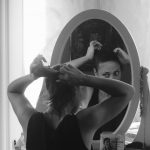The conjugation of verbs can keep Dutch language learners up at night. Why are they so important and why do people have so many problems with them? How to tackle the problem of Dutch verb conjugation?
The verb is the main part of a sentence in Dutch (and in every other language too). A sentence must have a verb to be a sentence. A sentence without a verb is not a sentence. Actually, a verb can be a sentence by itself, for example: “Sing!” “Stop!”
A verb tells a story. It tells us what has happened, what somebody did, said or thought. Verbs are also a really interesting part of a language. The most frequent ones are usually irregular and very short. The most common ones are very often just one syllable.
They are also quite tricky to learn because most of the time they change their form depending on person, tense or mode. We call this conjugation. Since we have to deal with a very large number of similar elements it’s really hard to use them fluently without making mistakes. Let’s be clear, the traditional approach to learning a language fails particularly badly when it comes to verb conjugation.
In the following article, you will find a lot of information about verb conjugation. We go through the rules, patterns and examples to give you a feeling of the size of the beast. The good news is that you don’t have to remember all that – you shouldn’t even try. There is a better way to do this.
At the end of the article we talk about the method that has allowed thousands of language learners to tackle the problem of verb conjugation in their target language. For many people conjugation is a question of success or failure in their language learning journey.
- What is conjugation?
- Dutch irregular verbs
- Dutch regular verbs
- How to find the stem of a regular verb
- Conjugation through tenses
- Onvoltooid Tegenwoordige Tijd (or present tense) in Dutch
- Onvoltooid Verleden (or imperfect tense) in Dutch
- Voltooid Tegenwoordige Tijd (Present Perfect Tense) in Dutch
- Voltooid Verleden Tijd (Past Perfect Tense) in Dutch
- Onvoltooid Tegenwoordige Toekomende Tijd (or simple future tense) in Dutch
- Voltooid Tegenwoordige Toekomende Tijd (or future perfect tense) in Dutch
- Onvoltooid Verleden Toekomende Tijd (or simple conditional mode) in Dutch
- Voltooid Verleden Toekomende Tijd (or conditional perfect) in Dutch
- The best way to learn Dutch verb conjugation
What is conjugation?
To begin with, it is useful to know what conjugation means.
Conjugation is the variation of a verb through modes, tenses, persons, numbers, sides and other grammatical categories. In Dutch, many verbs are conjugated regularly. That is, by using certain rules and by adding the correct ending, we get the correct form of the verb. However, there are (unfortunately) some verbs that do not follow any rule – these are irregular verbs.
In this article, I will introduce you to both types and show you how we should use them. Finally, I will tell you why you shouldn’t really care that much whether a verb is regular or irregular.
Dutch irregular verbs
Irregularity in verbs was originally the norm. This means that verb forms were ‘regular’ when they were irregular. This is how languages evolved – largely through random processes, acting in isolation from each other. The irregularity of verb forms reflects this randomness.
Over time, language has evolved. Verbs such as “hebben”, “zijn” or “komen”, which are very common, have retained their highly irregular conjugation pattern, while the conjugation pattern for less common verbs (e.g. “werken” or “luisteren”) has changed.
Today, the most commonly used verbs are irregular. Therefore, we will start with these verbs.
We can divide irregular verbs into two groups:
- completely irregular, of which we have 11 in total
- partly irregular, which are those that have some recurring patterns.
The 11 completely irregular verbs are: hebben, zijn, kommen, kunnen, zullen, mogen, zien, doen, slaan, gaan and staan.
You can use the Shadowing Method to automate the irregular verbs.
The conjugation of the verb “zijn” (meaning “to be”) in Dutch
The verb “to be” is by far the most common verb in Dutch.
At Taalhammer, we conducted an experiment in which we counted the verbs present in a large collection of Dutch texts. There were more than 36,000 of them in total, and the verb “zijn” occurred (in various forms) more than 8,000 times in this collection, which is 23% of all the verbs occurring.
The verb “zijn” allows you to say, for example, who you are and what your name is.
| Dutch | English |
|---|---|
| Ik ben Femke. | I am Femke. |
| Ik ben een Nederlander. (male)Ik ben een Nederlandse. (female) | I am Dutch. |
| Ik ben mooi en gelukkig. | I am beautiful and happy. |
But that is not all. In Dutch, it also functions as an auxiliary verb before a past participle. It is essential for creating compound tenses, such as “voltooid tegenwoordige tijd” (composite future tense), “voltooid verleden tijd” (the past perfect tense) and a few others (see the second part of this article on regular verbs).
Example sentences:
| Ik ben naar school gegaan. | I have gone to school |
| Ik ben dat alles vergeten. | I had forgotten all about it. |
| Waar ben je geweest? | Where have you been? |
| Subject | Present | Past | Perfect |
|---|---|---|---|
| Ik | ben | was | ben geweest |
| je/jij/u | bent | was | bent geweest |
| hij/zij/het | is | was | is geweest |
| wij/we | zijn | waren | zijn geweest |
| jullie | zijn | waren | zijn geweest |
| zij/ze | zijn | waren | zijn geweest |
Conjugation of the verb “hebben” (meaning “to have”) in Dutch
“Hebben” is the second most common verb in Dutch. In our experiment it accounts for about 10% of all verbs.
The basic meaning of the verb “hebben” is “to have”, which allows us, among other things, to express belonging and possession (both literally and abstractly).
| Dutch | English |
|---|---|
| Ik heb een goede baan en veel geld. | I have a good job and lots of money. |
| Ik heb twee kinderen en een hond. | I have two children and a dog. |
| Ik heb geluk in mijn leven. | I’m lucky in my life. |
“Hebben”, like “zijn”, is also an independent verb. It is an auxiliary verb before a past participle. It is needed to form compound tenses, such as “Voltooid Tegenwoordige Tijd” (Present Perfect), “Voltooid Verleden Tijd” (Past Perfect Tense) and a few others (see the second part of this article on regular verbs).
| Ik heb iets goeds gedaan. | I did something good. |
| Ik heb mijn moeder lang niet gezien. | I haven’t seen my mother for a long time. |
| Heb je lunch gehad? | Have you had lunch? |
Automating the conjugation and use of the verb “hebben” is essential on the way to fluency.
| Subject | Present | Past | Perfect |
|---|---|---|---|
| Ik | heb | had | heb gehad |
| je/jij/u | hebt | had | hebt gehad |
| hij/zij/het | heeft | had | heeft gehad |
| wij/we | hebben | hadden | hebben gehad |
| jullie | hebben | hadden | hebben gehad |
| zij/ze | hebben | hadden | hebben gehad |
Other completely irregular verbs
The remaining fully irregular verbs are: hebben, zijn, kommen, kunnen, zullen, mogen, zien, doen, slaan, gaan and staan.
These verbs are very important because of the frequency with which they occur in Dutch sentences.
In our experiment, they made up 20% of all verbs.
You will find the conjugations of these verbs in Appendix 1 at the end of this article.
You can read more about other difficult aspects in our article “The most difficult aspects of Dutch grammar“.
Dutch regular verbs
Regular verbs follow some conjugation patterns or rules.
To do this, we first have to find the stem in the verb and then, based on the given rule, add the matching ending. We’ll see that conjugating a regular verb is really easy when we know the rule.
On the other hand, relying only on a rule won’t lead us to fluency, because during conversation there will be no time to think about the rule – especially since some of them are quite complicated. You will have to practise those verbs the same way you do with irregular ones. More on that later.
How to find the stem of a regular verb
In order to conjugate a verb, its stem is necessary. To do this, we need the infinitive of the verb, e.g. : “werken”. Most infinitives end in “en”. To get the stem, we subtract the ending from the infinitive:
- werken – en = werk
- luisteren – en = luister
When an infinitive has a long vowel (a long vowel is a double vowel or a closed syllable), we have to remember that the stem also has to have a long vowel. For example, “lopen” means “to walk”. In this case the ‘o’ is a long vowel. When we try to extract the stem from this based on the earlier theory, we come out with “lop”. In this case, we need to double the vowel to make it long, i.e. “loop”. Other examples:
- koken – kook (to cook)
- leren – leer (to learn)
- horen – hoor (to listen)
When a verb has a double consonant, there is only one in the stem. E.g.:
- pakken – pak (to pack)
- missen – mis (to miss)
If there is a ‘v’ before the ending ‘en’ in the infinitive we change it to an ‘f’, and if there is a ‘z’ we change it to an ‘s’. E.g.:
- leven – leef (live)
- verliezen – verlies (to lose)

Conjugation through tenses
As I mentioned earlier, a verb can conjugate in different categories. Let us start with the tenses. Theoretically, there are only three tenses: past, present and future. However, there are “semi-tenses”, which are created by the interaction of tense with aspect or mood, for example when we are just saying something hypothetically.
In total, we have eight tenses:
| Dutch | English |
|---|---|
| Onvoltooid Tegenwoordige Tijd | Present Simple |
| Onvoltooid Verleden | Past Simple |
| Voltooid Tegenwoordige Tijd | Present Perfect |
| Voltooid Verleden Tijd | Past Perfect |
| Onvoltooid Tegenwoordige Toekomende Tijd | Future Simple |
| Voltooid Tegenwoordige Toekomende Tijd | Future Perfect |
| Onvoltooid Verleden Toekomende Tijd | Conditional |
| Voltooid Verleden Toekomende Tijd | Conditional Perfect |
Onvoltooid Tegenwoordige Tijd (or present tense) in Dutch
For the present tense (onvoltooid tegenwoordige tijd), we conjugate regular verbs as follows:
| Subject | Form | Example |
|---|---|---|
| ik (I) | stem | Ik werk. |
| je/jij (you) | stem + t | Je werkt. |
| hij/zij/het (he/she/it) | stem + t | Hij werkt. |
| we/wij (we) | infinitive | We werken. |
| jullie (you) | infinitive | Jullie werken |
| ze/zij (they) | infinitive | Ze werken. |
Remember that a syllable never ends in two letters that are the same. If a stem ends in ‘t’, do not add another ‘t’.
Example sentences:
| Ik werk in een kantoor. | I work in an office. |
| Werkt hij in een kantoor? | Does he work in an office? |
| Hoe werkt het Internet? | How does the internet work? |
| Luistert ze graag naar muziek? | Does she like to listen to music? |
| Ze leeft met haar moeder. | She lives with her mother. |
Onvoltooid Verleden (or imperfect tense) in Dutch
When using the imperfect tense (onvoltooid verleden), we add the ending ‘te’ or ‘de’ to the verb stem (‘this’ or ‘that’ in the plural).
The choice of ‘te’ or ‘de’ depends on the last vowel in the stem.
If it is voiced (i.e. b, d, g,w, z, r, l, m, n), we add ‘d’, e.g.:
- horen – hoorde (the last letter of the stem ‘hor’ is a voiced ‘r’)
- bellen – belde (the last letter of the stem ‘bel’ is a voiced ‘l’)
If it is voiceless (i.e. p, t, k, f, s, sz, c, a, e, i, u, y) then we add a ‘t’, e.g.:
- werken – werkte (the last sound of the stem ‘werk’ is a voiceless ‘k’)
- zetten – zette (the last word of the stem ‘zet’ is a voiceless ‘t’)
- stoppen – stopte (the last sound of the stem ‘stop’ is a voiceless ‘p’)
It’s quite a complicated rule, so for simplicity we use the abbreviation “soft ketchup“, which is a set of voiceless vowels. Put simply:
if the last vowel in the stem belongs to “soft ketchup” we add ‘te’ or ‘ten’, we do not add ‘de’ or ‘den’.
| Subject | Form | Example |
|---|---|---|
| ik (I) | stem + te/de | Ik werkte. Ik hoorde. |
| je/jij/u (you) | stem + te/de | Je werkte. Je hoorde. |
| hij/zij/het (he/she/it) | stem + te/de | Hij werkte. Hij hoorde. |
| we/wij (we) | stem + ten/den | We werkten. We hoorden. |
| jullie (you) | stem + ten/den | Jullie werkten. Jullie hoorden. |
| ze/zij (they) | stem + ten/den | Ze werkten. Ze hoorden. |
Example sentences:
| Dutch | English |
|---|---|
| Ik merkte zijn nieuwe auto meteen op. | I noticed his new car right away. |
| Rustten ze het hele weekend? | Did they rest all weekend? |
| Hoorde je iets? | Did you hear anything? |
| Hoorden jullie het geluid? | Did you hear the sound? |
| Ze woonde bij haar moeder. | She lived with her mother. |
Voltooid Tegenwoordige Tijd (Present Perfect Tense) in Dutch
The next tense is the simple past tense (voltooid tegenwoordige tijd). When using it, we use the auxiliary verbs “to have” – “hebben” and “to be” – “zijn” (which we described above) and the past participle, which is formed by adding the prefix ‘ge’ and the suffix ‘t’ or ‘d’ to the stem (according to the “Soft Ketchup” rule described above).
| Subject | Auxiliary verb | Participle | Example |
|---|---|---|---|
| ik (I) | heb / ben | ge + [stem] + t/d | * Ik heb gewerkt. * Ik ben verhuisd. |
| je/jij (you)u | hebt / bentheeft / bent | ge + [stem] + t/d | * Je hebt gewerkt. * Je bent verhuisd. |
| hij/zij/het (he/she/it) | heeft / is | ge + [stem] + t/d | * Hij heeft gewerkt. * Hij is verhuisd. |
| we/wij (we) | hebben / zijn | ge + [stem] + t/d | * We hebben gewerkt. * We zijn verhuisd. |
| jullie (you) | hebben / zijn | ge + [stem] + t/d | * Jullie hebben gewerkt. * Jullie zijn verhuisd. |
| ze/zij (they) | hebben / zijn | ge + [stem] + t/d | * Ze hebben gewerkt. * Ze zijn verhuisd. |
Example sentences:
| Dutch | English |
|---|---|
| Jullie hebben gekookt. | You have cooked. |
| We zijn vorig jaar drie keer verhuisd. | We moved three times last year. |
| Ik heb in dit kantoor nooit gewerkt | I never worked in this office |
| Wat is gisteren gebeurd? | What happened yesterday? |
| Mijn zoon is zeer gegroeid. | My son has grown very much. |
Voltooid Verleden Tijd (Past Perfect Tense) in Dutch
In the perfect tense (voltooid verleden tijd), the formation of sentences is similar to the present perfect, but the verbs “hebben” and “zijn” are in the past tense.
| Subject | Auxiliary verb | Participle | Example |
|---|---|---|---|
| ik (I) | had / was | ge + [stem] + t/d | * Ik had gewerkt. * Ik was verhuisd. |
| je/jij/u (you) | had / was | ge + [stem] + t/d | * Je had gewerkt. * Je was verhuisd. |
| hij/zij/het (he/she/it) | had / was | ge + [stem] + t/d | * Hij had gewerkt. * Hij was verhuisd. |
| we/wij (we) | hadden / waren | ge + [stem] + t/d | * We hadden gewerkt. * We waren verhuisd. |
| jullie (you) | hadden / waren | ge + [stem] + t/d | * Jullie hadden gewerkt. * Jullie waren verhuisd. |
| ze/zij (they) | hadden / waren | ge + [stem] + t/d | * Ze hadden gewerkt. * Ze waren verhuisd. |
Example sentences:
| Dutch | English |
|---|---|
| Ik had je echt gemist. | I really missed you. |
| We waren vorig jaar drie keer verhuisd. | We moved three times last year. |
| Jullie waren echt veranderd. | You were really changed. |
Onvoltooid Tegenwoordige Toekomende Tijd (or simple future tense) in Dutch
In the simple future tense, we use “zullen” as an auxiliary verb. The main verb, on the other hand, remains as an infinitive, regardless of the person.
| Subject | Auxiliary verb | Main verb | Example |
|---|---|---|---|
| ik (I) | zal | infinitive | Ik zal werken. |
| je/jij/u (you) | zult/zal | infinitive | Je zult werken. |
| hij/zij/het (he/she/it) | zal | infinitive | Hij zal werken. |
| we/wij (we) | zullen | infinitive | We zullen werken. |
| jullie (you) | zullen | infinitive | Jullie zullen werken. |
| ze/zij (they) | zullen | infinitive | Ze zullen werken. |
Example sentences:
| Dutch | English |
|---|---|
| Ik zal je morgen voor tien uur opbellen. | I will call you tomorrow before 10AM. |
| Mijn zoon zal volgend jaar groeien. | My son will grow next year. |
| Zullen jullie ons missen? | Will you miss us? |
| Wij zullen morgen verhuizen. | We will move tomorrow. |

Voltooid Tegenwoordige Toekomende Tijd (or future perfect tense) in Dutch
The future perfect tense uses the verbs “hebben” or “zijn” and “zullen”. The verb is then in the same form as in the past perfect tense, that is, with the prefix ‘ge’.
| Subject | Auxiliary verb | Auxiliary verb | Participle | Example |
|---|---|---|---|---|
| ik (I) | zal | hebben/zijn | ge + [stem] + t/d | * Ik zal hebben gewerkt. * Ik zal zijn verhuisd. |
| je/jij/u (you) | zult/zal | hebben/zijn | ge + [stem] + t/d | * Je zult hebben gewerkt. * Je zult zijn verhuisd. |
| hij/zij/het (he/she/it) | zal | hebben/zijn in | ge + [stem] + t/d | * Hij zal hebben gewerkt. * Hij zal zijn verhuisd. |
| we/wij (we) | zullen | hebben/zijn | ge + [stem] + t/d | * We zullen hebben gewerkt. * We zullen zijn verhuisd. |
| jullie (you) | zullen | hebben/zijn | ge + [stem] + t/d | * Jullie zullen hebben gewerkt. * Jullie zullen zijn verhuisd. |
| ze/zij (they) | zullen | hebben/zijn | ge + [stem] + t/d | * Ze zullen hebben gewerkt. * Ze zullen zijn verhuisd. |
Example sentences:
| Dutch | English |
|---|---|
| Volgend jaar zal ik in dit kantoor 10 jaar gewerkt hebben. | Next year I will have worked for 10 years in this office. |
| Zullen jullie volgend jaar in dit kantoor 10 jaar gewerkt hebben? | Will you have worked in this office for 10 years next year? |
Onvoltooid Verleden Toekomende Tijd (or simple conditional mode) in Dutch
Finally, we have the conditional simple mode, which grammatically looks the same as future simple, except that we use the past form “zullen” or “zouden”.
| Subject | Auxiliary verb | Main verb | Example |
|---|---|---|---|
| ik (I) | zou | infinitive | Ik zou werken. |
| je/jij/u (you) | zou | infinitive | Je zou werken. |
| hij/zij/het (he/she/it) | zou | infinitive | Hij zou werken. |
| we/wij (we) | zouden | infinitive | We zouden werken. |
| jullie (you) | zouden | infinitive | Jullie zouden werken. |
| ze/zij (they) | zouden | infinitive | Ze zouden werken. |
Example sentences:
| Dutch | English |
|---|---|
| Ik zou in dit kantoor nooit werken | I would never work in this office |
| Ik zou je missen, als je weggaat. | I would miss you if you leave. |
| Zouden jullie graag verhuizen, als jullie geld hadden? | Would you like to move if you had money? |
| We zouden naar het lied luisteren, als we een radio hadden. | We would listen to the song if we had a radio. |
Voltooid Verleden Toekomende Tijd (or conditional perfect) in Dutch
In the conditional perfect, we use the auxiliary verb ”zou/zouden” and ”hebben” or ”zijn”. The verb remains in the past form, that is, with the prefix ‘ge’ and the ending ‘t’/’d’.
| Subject | Auxiliary verb | Auxiliary verb | Participle | Example |
|---|---|---|---|---|
| ik (I) | zou | hebben/zijn | ge + [stem] + t/d | * Ik zou hebben gewerkt. * Ik zou zijn verhuisd. |
| je/jij/u (you) | zou | hebben/zijn | ge + [stem] + t/d | * Je zou hebben gewerkt. * Je zou zijn verhuisd. |
| hij/zij/het (he/she/it) | zou | hebben/zijn | ge + [stem] + t/d | * Hij zou hebben gewerkt. * Hij zou zijn verhuisd. |
| we/wij (we) | zouden | hebben/zijn | ge + [stem] + t/d | * We zouden hebben gewerkt. * We zouden zijn verhuisd. |
| jullie (you) | zouden | hebben/zijn | ge + [stem] + t/d | * Jullie zouden hebben gewerkt. * Jullie zouden zijn verhuisd. |
| ze/zij (they) | zouden | hebben/zijn | ge + [stem] + t/d | * Ze zouden hebben gewerkt. * Ze zouden zijn verhuisd. |
The best way to learn Dutch verb conjugation
It doesn’t matter whether a verb is regular or not. In order to be able to use it fluently in conversation, we need to practise its use many times before it becomes a reflex. I would even dare to say that regular verbs are a kind of trap, because we think, because there is a simple rule describing their conjugation, that by knowing this rule, we will simply be able to use this verb in conversation. Nothing could be further from the truth. Experience shows that trying to speak only on the basis of the learned rules goes very slowly.
Note that we usually learn the conjugation of a verb in the affirmative form in order:
- I
- You
- He/she
- We
- You
- They
All we have to do is to say a question or a negative in the third person or in the plural and our speech usually starts to lose its fluency. Our brain needs time to process information. We basically go through all these forms in our mind in the order we learned them and then try to make a question or a negative out of it. It’s a whole bunch of calculations that our brain has to do in order to even start putting a sentence together.
I mentioned that regular verbs can be a trap because in practice it means that we don’t practise them often enough, counting on the fact that during a conversation we conjugate the verb according to the mentioned rule.
This is a fundamental mistake. The rules describing the conjugation of regular verbs are, of course, useful for memorising particular verb forms. However, in order to be able to use a verb fluently in a sentence, we simply have to practise it a lot.
The best way to practise reflexive use of verbs is to memorise example sentences. This is an unbelievably effective exercise, which has many additional benefits over and above those described above. Read more about it in out article “The best way to learn a language is through sentences“.
Firstly: we remember the whole phrase ready to use. Secondly: We memorise the way the verb and the complement are combined. So we memorise and practise the whole sentence structure. In practice, this means that we will be able to build sentences fluently.
Note that this is a fundamental change in the approach to language learning. Instead of memorising individual words and hoping that you will, by some miracle, be able to combine them fluently into sentences, it is much better to simply memorise and repeat entire sentences using Spaced Repetition algorithm.
The verb, or judgment, is the key part of a sentence, which governs the whole sentence and gives it meaning. Therefore, it is crucial to memorise and practise it using whole sentences as examples.
Finally remember that learning vocabulary is as important as learning grammar. We write about it in the article “How to Expand Your Vocabulary in Dutch language“







